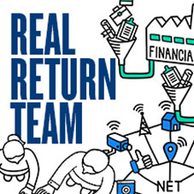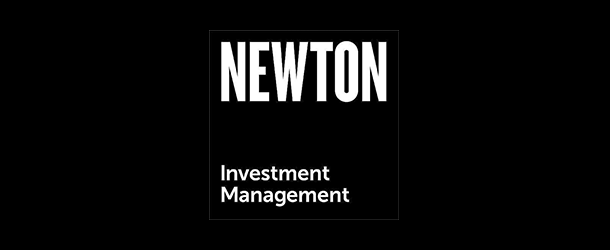The end of the second quarter marked an anniversary. On 30 June 2017, the current economic cycle was eight years old,[1] making it the third-longest expansion in the post-war period. Looking back, it certainly hasn’t been a normal recovery. The story of the period has broadly been one of a constant tug of war between the deflationary forces which have been the natural post-crisis tendency and the reflationary response provided by central banks’ increasingly interventionist and experimental monetary policies.
Interest rates have barely got off the floor, and ‘emergency’ monetary policy has been in place almost throughout the last eight years (although the participants have changed). Despite this, nominal growth has remained very subdued, and corporate profits on a global basis have barely grown since 2011. Most striking of course is that financial-asset prices of almost all types have rocketed, sustained by persistent stimulus, a distinct lack of alternatives and the promise that a more ‘normal’ recovery was just around the corner.
The reflation impetus subsides
With this thought in mind, the sight of world stock markets continuing their relentless upward march during the second quarter seems yet another example of ‘situation normal’ for today’s financially charged world. Although geopolitical and economic uncertainty remain elevated, some of the risks previously jangling investors’ nerves, such as those deriving from heightened political tensions, seem to have subsided somewhat. The wave of nationalist/populist feeling that threatened to sweep across Europe in the wake of the UK’s Brexit referendum has failed as yet to get traction at the electoral level. Indeed, the recent election in France of Emmanuel Macron – seen as a liberal internationalist as well as a potential reformer domestically – and the improved electoral prospects of Chancellor Merkel’s CDU party in Germany appear to have shifted the pendulum back in a direction more favourable to the European Union. This, and some stronger economic data (particularly in Germany), have combined to improve investor sentiment towards the region markedly.
In the context of this benign environment for taking risk, the underlying trend for most of the latest quarter has been market participants appearing to become progressively more sceptical about the ‘reflation trade’. This more nuanced outlook has been echoed in economic surprise indices, which have fallen sharply. Growth sectors, such as health care and technology, not cyclicals, have until very recently driven stock markets. Industrial indicators such as US auto sales have fallen in every month this year (after having doubled from around nine million in 2009 to over 18 million in December 2016),[2] and inflation data has generally remained subdued. Core inflation in the US, excluding the effect of housing, which has been distorted by monetary policy, is very low (at less than 1%) and seems to be falling despite an apparently tight US labour market.[3]
In the energy patch, OPEC’s (Organization of the Petroleum Exporting Countries) ability to control prices has again come into question as non-OPEC production has continued to rise (heavily influenced by production from the US, which is being exported for the first time in 40 years), causing oil prices to subside from the levels seen in December and January.
Predictably too, one might say, market participants seem to have come to the realisation that Mr Trump may not after all be able transform growth in the US economy. Although his agenda continues to look distinctly shaky, investors do still seem to be clinging to the hopes of some tax reforms being agreed before the mid-term elections in 2018.
Wishful thinking?
Once again, it seems we are being steered towards the idea that policy has finally created some kind of synchronous global recovery. The International Monetary Fund articulated the case for normalisation in its April World Economic Outlook. It argued that three successive shocks – the financial crisis of 2007-9, the eurozone crisis of 2009-13 and the commodity price deflation of 2014-15 – are moving into the past. It believes the global economy is moving back to equilibrium, with unemployment in the major economies having fallen, and that output gaps are likely to close further – leading to rising inflation.[4]
While the idea of three successive shocks and ‘it’s finally over’ certainly makes a neat story and is clearly the one policymakers want to tell, it is by no means the only possibility.
Key to the official narrative is that the experiment with monetary policy has been a success, in that it has shepherded us all (not just banks that were bailed out!) through this difficult period, and saved us from a much worse fate.
The problem with this version of history is that the global financial crisis and subsequent crises were not unforeseeable exogenous shocks that came from outside the system, but were a direct result of policies and models which led mainstream economists to fail to see the last crisis, even when it had begun. The application of exactly the same models and policies today does not exactly inspire confidence.
Perhaps more important to policymakers is that there is a great deal of credibility hanging on the success of their policy choices, and part of the evidence for that will be their ability to exit. In addition to that, at eight years and counting, the probability that the end of this cycle is just around the corner is rising rapidly. Going into the next downturn with no interest-rate cushion would not constitute prudent central banking.
What could a rate cycle look like?
Key for investors is how far interest rates could rise (assuming economies and financial markets permit the process at all). Market estimates of a ‘neutral’ real interest rate – i.e. the short-term interest rate adjusted for inflation that would neither have an expansionary nor contractionary effect on the economy – vary widely (anywhere between 0 and 3%) and may not be very useful. What policymakers and investors do seem to agree on is that structural factors like demography have brought this rate downwards – perhaps to between 0.5 and 1%. This would fit with history: each cycle in the US since the 1970s has seen the real interest rate peak and trough at a lower rate.
Interest rates can of course rise further but, perhaps not surprisingly, the world has become a much more interest rate-sensitive place, and there may be some surprise at how much lower than ‘normal’ an interest rate that starts to create problems might be.
The corollary of this, of course, is that interest rates are likely to settle even lower (and/or economies require more aggressively unorthodox policy support) in the next downturn.
[1] See, for example, http://www.nber.org/cycles.html
[2] Reuters, July 2017
[3] Bloomberg, July 2017
[4] International Monetary Fund, World Economic Outlook, April 2017: Gaining Momentum? http://www.imf.org/en/Publications/WEO/Issues/2017/04/04/world-economic-outlook-april-2017
Any reference to a specific security, country or sector should not be construed as a recommendation to buy or sell investments in those countries or sectors. Please note that holdings and positioning are subject to change without notice.





Comments